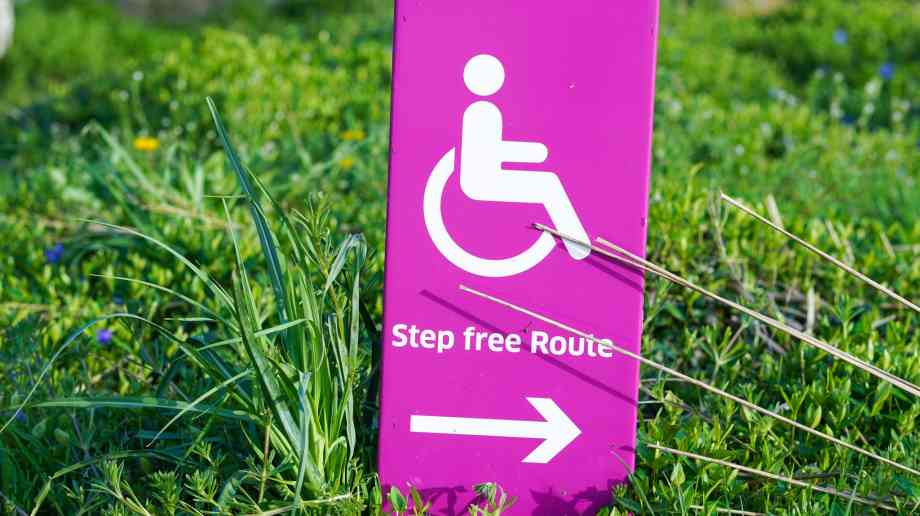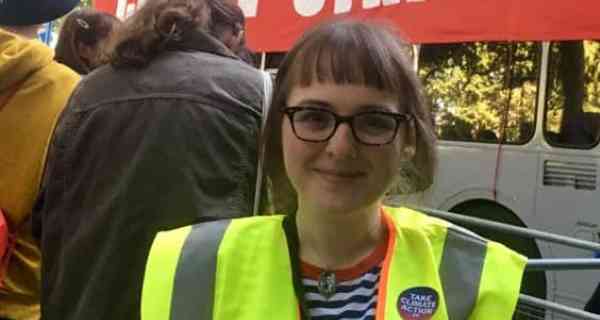Sue Robb of 4Children talks to Julie Laughton and Alison Britton from the Department for Education about the role of childminders in delivering the 30 hours free entitlement.

Making greener journeys more desirable
Francesca DiGiorgio writes for Friends of the Earth about the design aspect of shifting local planning to deter unnecessary car journeys, as well as how the current situation impacts wheelchair users
Cars are interesting. We seem to think we need them, and some people do because cars have made lives easier, and quality of life possible, for people who can’t easily use public transport, or cycle, or walk unaided.
But the fact remains that too many of us rely too much on cars over preferable alternatives. Transport spews out about a quarter of the UK’s greenhouse gas emissions. It’s also a major source of air pollution linked to tens of thousands of early deaths a year in the UK. And we know that too many car journeys are very short ones, of just a few miles. This is where councils need to design better to make journeys on wheels (of all kinds) and on foot more desirable. The design aspect of this shift is incredibly important, and all too often done without proper consultation.
Councils are key here, and many are currently trying to figure out how quickly they can shift people out of private cars and onto bikes and buses or to just walk. We know this is better for health, and for getting emissions down.
Electric cars are having their moment, and will soon become the new norm, significantly cutting carbon emissions and some types of air pollution. This shift may mean some transport planners hope this results in them not having to think about car use and can concentrate instead on the planning buzz word ‘shared space’. But even conservative estimates of what is needed point to some modal shift: a switch towards a more sustainable and less polluting form of transport.
Reducing car mileage
We’ve got to get car milage down, especially in cities. We need a balanced transport policy that accounts for everyone. Building more roads in a climate emergency is senseless policy.
The Climate Change Committee (CCC) has made its recommendation on the UK’s pathway for reduced carbon emissions, including for surface transport. This pathway, which they admit should be considered the minimum benchmark, identifies a nine per cent reduction in car mileage by the year 2035 and 17 per cent by 2050. This means much greater reductions in urban car journeys where modal shift is more straight-forward than modal shift for longer-distance inter-urban travel.
Friends of the Earth argues that we need deeper, faster reductions in car mileage if the UK is to make our fair share of global carbon emissions cuts to prevent more than 1.5 degrees of global warming. The CCC’s pathway for all emissions leaves the UK well short of the reductions required in more equitable pathways (64 per cent emissions cuts by 2030 compared to 74 per cent, 80 per cent or 90 per cent, depending on which approach to equity chosen).
So that’s the numbers, but what about the day-to-day lived reality of what those numbers mean? Something that is over-looked in this area of policy and design as with so many other areas of life is accessibility. Genuine, literal accessibility. For everyone.

Access and active travel
As a wheelchair user and climate campaigner, the intersection between disability and active travel is one that I am confronted with every day. Though I live in Newcastle upon Tyne, I often need to rely on taxis when visiting London for work or pleasure, because so much of the London underground does not provide step-free access. For active travel to be truly viable, it needs to be accessible to everyone, including disabled people.
As we have seen in recent years, the push for public spaces that increase active travel, with little regard for access, has seen disabled people designed out of public life, and at times lose their lives as a consequence.
Just last February, the lack of tactile markers at the edge of a train platform in Eden Park Station in Bromley were implicated in the death of a blind man called Cleveland Gervais, who fell from the platform edge and was killed by a train.
Blind and partially sighted people face a number of obstacles in the public realm. Shared space schemes leading to collisions with cyclists, the lack of audible sounds on electric vehicles which make safety on the streets impossible, and e-scooters used at high speeds on pavements, with little enforcement of the laws designed to protect us all from fatal collisions. These are just some of the everyday dangers faced.
Street furniture, pavement parking and lack of accessible infrastructure, such as dropped kerbs with tactile paving, make active journeys needlessly hazardous for disabled people like me and many others. Instead of offering a climate-friendly, inclusive way to get around, active travel, when done the wrong way, acts as a barrier which prevents disabled people from participating in society.
However, there are ways to avoid this. Disabled people are experts in their own access needs when it comes to navigating public spaces, so designing these areas of public life with their meaningful input should be at the heart of active travel planning. That way, preventable, fatal accidents never need to happen. A world where we address both the climate emergency and disabled people’s needs for accessible, carbon friendly journeys is possible.
Local authority action
Local authorities should be serious about the climate emergency, and they must up their game. Intelligent, inclusive policies that consult properly and extensively with disabled people and their organisations are needed to get people out of their cars, but they should also acknowledge that for some, car journeys are necessary and not optional, and that’s ok.
Across the country they should aim to double the proportion of journeys by public transport, cycling and walking, as well as encouraging car-sharing. Some things require government support, and this is surely one because it would repay with the double benefit of reduced emissions-which we have to do in a climate crisis, and quality of life resulting in lower levels of social isolation. There are many actions that councils can take with government support, Friends of the Earth have counted 27, but please, let’s design with everyone in mind.
Company Focus
The Isuzu D-Max is a rugged workhorse that can fulfil a myriad of purposes as both a business and personal vehicle. Consequently, the D-Max is a particularly popular choice when it comes to farming, construction, and trade industries. Uncompromising in nature, the D-Max strives to be the ideal companion for many business needs.
Event Diary
UKREiiF has quickly become a must-attend in the industry calendar for Government departments and local authorities.
The multi-award-winning UK Construction Week (UKCW), is the UK’s biggest trade event for the built environment that connects the whole supply chain to be the catalyst for growth and positive change in the industry.
Supplier Profiles
Geo Energy
At GeoEnergy Design, we're on a mission to disrupt the traditional way heating and cooling ha
Latest Features
Professor Harith Alani, director of the Knowledge Management Institute at the Open University explains how AI can be used for good and bad.
Alex Lawrence, head of health & social care, techUK sets out techUK’s Five Point Plan for CareTech.












